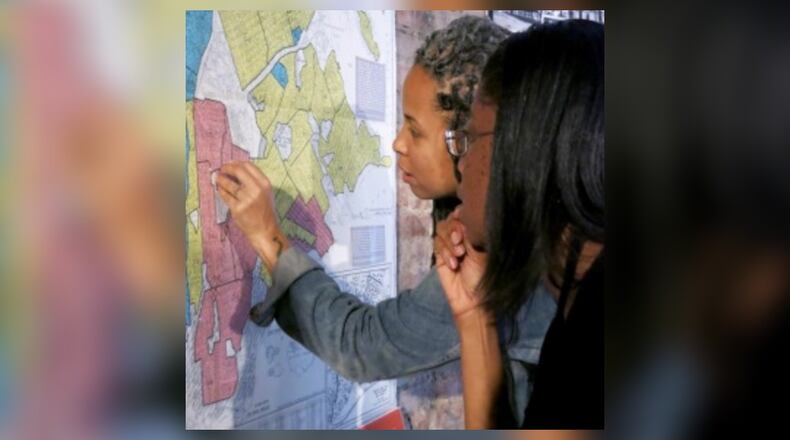“This exhibit is more than a history lesson. It’s a chance for us to redesign the redline so that every person, regardless of their race, family income, or zip code, has what they need to learn, grow, and thrive,” said Kristina Scott, CEO of Learn to Earn Dayton, one of the project co-sponsors.
Project sponsors are also planning in-person and virtual events to accompany Undesign the Redline, including book conversations, expert talks and classes on preparing for homeownership.
The exhibit’s namesake, redlining, was a practice by the federal government and banks into the 1970s that created segregation and racial inequalities in cities. The effects of redlining can still be seen today in America’s deeply segregated cities such as Dayton.
In the 1930s, federal government surveyors created maps that deemed white neighborhoods desirable for mortgage lending and neighborhoods with high numbers of African Americans or European immigrants, especially Jewish people, “hazardous” for lending by drawing red lines around those neighborhoods. Banks used these maps to systematically deny loans to minority neighborhoods, a practice known as redlining.
The Fair Housing Act of 1968 made redlining illegal. But housing advocates say little has changed. The Black homeownership rate nationally is back to the same rate as the day the Fair Housing Act was signed and cities like Dayton remain racially segregated.
“This exhibit could not be more timely or topical,” said Jeffrey Trzeciak, Dayton Metro Library executive director.
Faheem Curtis-Khidr, a history professor at Sinclair Community College, said the time is right and people are more receptive to hearing about policy changes that need to be made to bring about racial equity.
Curtis-Khidr will be leading a virtual discussion with area experts on the evening of Aug. 19 on how the history of government policies such as redlining, restrictive covenants and blockbusting contributed to the state of Dayton today. You can register for the talk on the library’s website.
Curtis-Khidr hopes that people visiting the Undesign the Redline exhibit and attending related programming walk away with historical context but also a desire to create change.
“Because history is what it is. That’s not going to change. We see the results of it: we have the West Side, the East Side, Old North Dayton,” he said. “So what’s the next step for us Daytonians? Let’s be solution-minded. And I think that’s what gives us an opportunity to come together as a community to find the best practices to move forward to change the experiences of future Daytonians … offer local ideas to your state representatives, your local school board, chiefs of police, etc. on ways to better implement change ”
Nancy McHugh, executive director of the Fitz Center for Leadership in Community at the University of Dayton, said this exhibit on local history will be helpful because you can never know a problem until you understand how it plays out in your community.
“We can understand redlining on a national level but until we understand how it has affected specific communities within Dayton, we’re not going to understand how to create remedies for Dayton,” she said.
Wittenberg University is hosting a virtual event with Richard Rothstein, the author of “The Color of Law: A Forgotten History of How Our Government Segregated America,” on Sept. 15.
Think TV, the University of Dayton and Wittenberg University are collaborating on a documentary about redlining in Dayton that will be released in early 2022.
Undesign the Redline host sites:
Aug. 6 - Sept. 25: Dayton Metro Library
October: University of Dayton
November: Sinclair Community College
January: Trotwood-Madison City School District
February: Wright State University
March: Corinthian Baptist Church, Dayton
April: The HUB powered by PNC at the Dayton Arcade
About the Author


